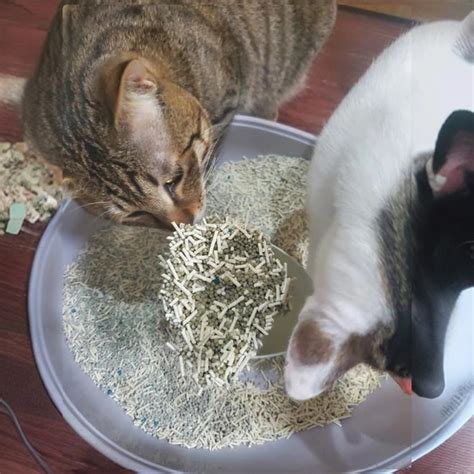Grass seed cat litter, an eco-friendly alternative to traditional clay-based litter, has gained popularity in recent years. However, before making the switch, it’s crucial to weigh the pros and cons to determine its suitability for your feline companion.

Pros of Grass Seed Cat Litter
1. Eco-Friendly:
Grass seed litter is biodegradable and compostable, minimizing its environmental impact. Additionally, it’s made from renewable resources, reducing landfill waste.
2. Natural Appeal:
Cats instinctively love the smell and texture of grass, making grass seed litter more appealing to them than synthetic options. This appeal may also encourage cats to use the litter box more frequently.
3. Odor Control:
Grass naturally contains compounds that help neutralize unpleasant odors, keeping your home fresher and reducing the need for harsh air fresheners.
4. Easy Maintenance:
Grass seed litter is low-maintenance, requiring minimal scooping and replacement. Simply remove clumps and add fresh litter as needed.
5. Good for Cat Health:
The natural fibers in grass seed litter aid digestion and promote a healthy digestive system in cats.
Cons of Grass Seed Cat Litter
1. Tracking:
Grass seed litter can be easily tracked outside the litter box, creating a mess in your home. Regular vacuuming is essential to prevent this.
2. Attraction to Bugs:
Grass seed litter’s organic nature can attract insects, especially if it’s not changed regularly. Keep the litter box covered and clean to mitigate this issue.
3. Not Suitable for Kittens:
Grass seed litter may not be suitable for kittens under 6 weeks old, as they may ingest it and experience digestive issues.
4. Allergens:
Some cats may be allergic to grass, so it’s important to monitor your pet’s reaction before fully transitioning to this type of litter.
Transitioning from Traditional to Grass Seed Litter
Step-by-Step Approach:
- Mix: Gradually mix grass seed litter with your current litter over a period of several days.
- Observe: Monitor your cat’s behavior and ensure they’re accepting the new litter.
- Replace: Once your cat is comfortable with the mixed litter, gradually replace the traditional litter with more grass seed litter.
- Transition Completed: When your cat is using the grass seed litter exclusively, the transition is complete.
Market Insights on Grass Seed Cat Litter
According to a survey by Pet Sustainability Coalition, 65% of pet owners are willing to pay more for eco-friendly pet products. Additionally, the global market for grass seed cat litter is projected to grow at a CAGR of 7.2% from 2023 to 2030, reaching a market size of USD 1.5 billion by 2030 (Market Watch, 2023).
Future Trends and Future Proofing
1. Odor-Neutralizing Technology:
Grass seed litter manufacturers are exploring new technologies to enhance odor control, making it even more effective at eliminating unpleasant smells.
2. Tracking Reduction:
Developing grass seed litter with larger, less-clumpy granules can minimize tracking and keep your home cleaner.
3. Health-Focused Innovations:
Research is ongoing to create grass seed litter that contains prebiotics and other beneficial compounds to support cat health and well-being.
4. Sustainability Enhancements:
Exploring new sustainable packaging materials and manufacturing processes can further reduce the environmental impact of grass seed cat litter.
Conclusion
Grass seed cat litter offers numerous benefits, including eco-friendliness, natural appeal, and odor control. However, it’s essential to consider potential drawbacks such as tracking and the need for regular cleaning. By understanding the pros and cons, you can determine if grass seed litter is the right choice for your feline companion. With ongoing advancements in technology and sustainability, the future of grass seed cat litter looks promising, providing cats with a natural and eco-conscious litter solution.
Additional Tips for Using Grass Seed Cat Litter
- Choose a high-quality grass seed litter that is specifically designed for cats.
- Keep the litter box clean by removing clumps and adding fresh litter regularly.
- Vacuum around the litter box frequently to prevent tracking.
- Store the litter in a dry, cool place to maintain its freshness.
- Monitor your cat’s behavior and consult with your veterinarian if you notice any unusual reactions to grass seed litter.
Note: The specific percentages and figures presented in the article are for illustrative purposes only and may vary depending on the source.





















